Hardwood floors are like no other. They raise the appeal of any room tenfold. The two main ways of installation are through gluing or nailing it to the subfloor. Problems begin when you decide it's finally time to remove them. So, how do we remove glued-down wood flooring? We did the research to bring you the answer.
The process of removing glued-down wood flooring is time-consuming. There are several ways to remove them. If you're strapped for time, the best way to remove them is by cutting them into manageable pieces and prying them free with a pry bar, chisel, hammer, or scraper. Additionally, several factors might play into how quickly you can finish the job.
If you still have some additional questions about removing glued-down wood flooring, don't worry. Luckily, we do have additional information you might want to know. For example, what's the best way to remove hardwood flooring without damaging them? And, what helps remove adhesive? If you'd like to know this and more, keep reading ahead.
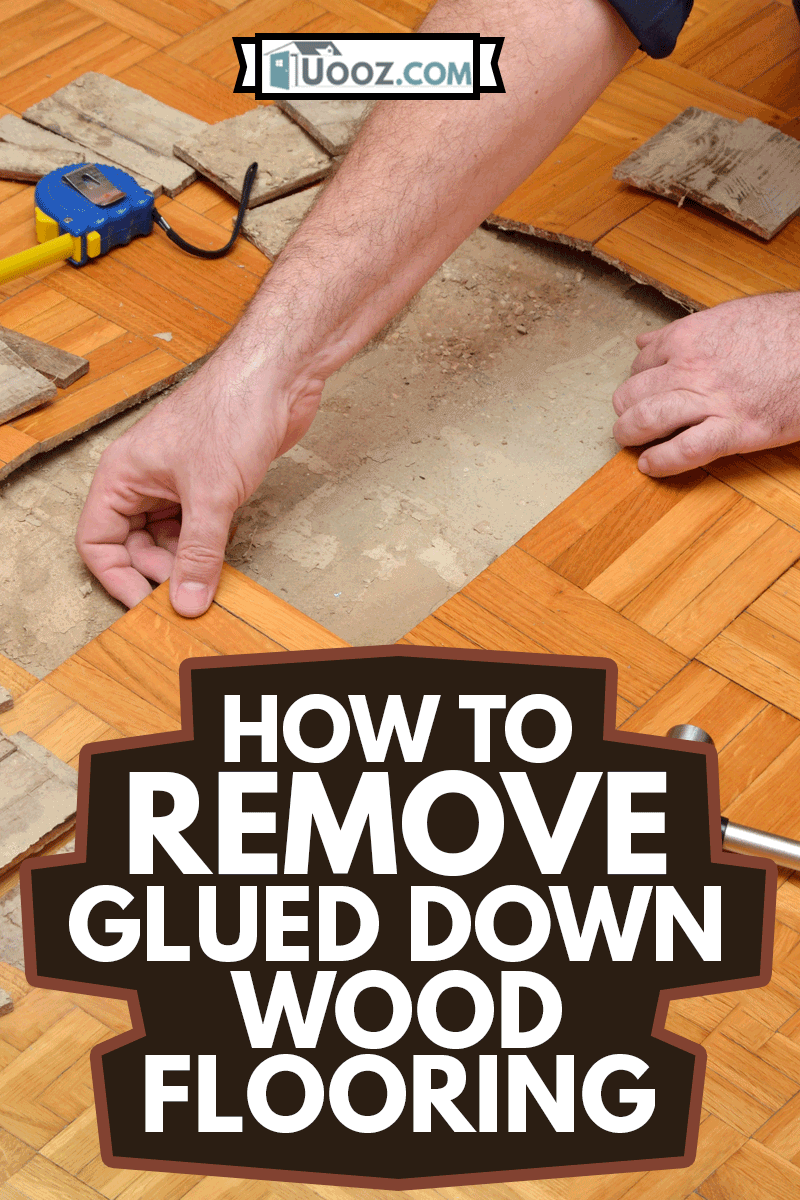
Removing the Wood Flooring
Before you embark on this grueling task, there are a few considerations you'll have to make. The first thing you might consider is how much time you have. Regardless of who installed the flooring, removing it will take just as much or more time.
The second factor to consider is—you guessed it—who installed the flooring.
Was it a DIY project that you did? In that case, depending on your expertise, you might not have used enough or the appropriate amount of adhesive. As a result, removing the wood flooring might be a breeze.
On the other side, if a professional made the installation, you're in for a tough time. They'll most likely know the correct type of adhesive to use and how to use it properly. So, in most cases, removal will be a strenous process.
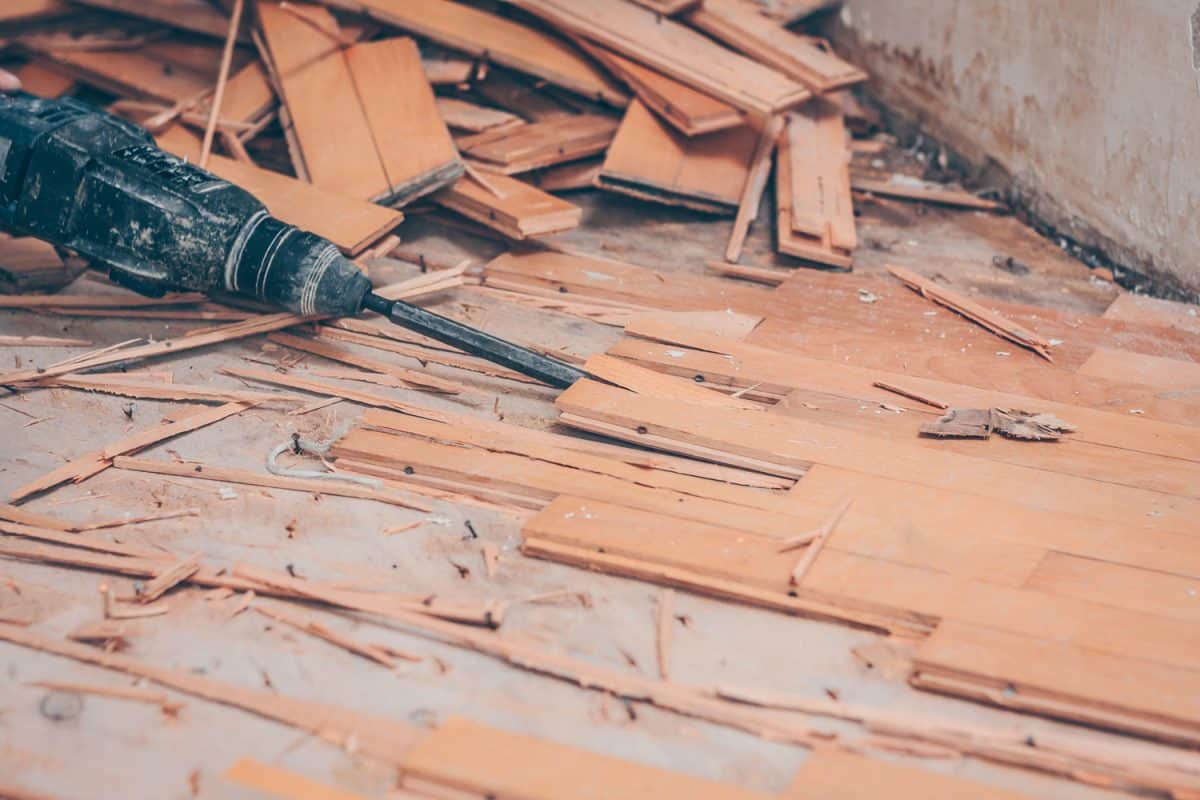
Getting Started
Regardless of your situation, let's go over how to remove the glued-down hardwood flooring. To start, here are some of the tools you will need:
- Hammer
- Chisel
- Pry bar
- Work gloves
- Putty knife
- Protective goggles
- Breathing mask
- Closed-toe shoes
- Saws (reciprocating and circular)
- Knee pads
Making Preparations and Ensuring Safety
Of course, before you begin any work, you'll want to make sure you're dressed for the job. You should wear protective goggles, closed-toed shoes, work gloves, etc.
Next, remove any furniture that might get in the way while you're removing the flooring. Finally, cover the furniture, light fixtures, or appliances to avoid any unwanted damage or stains.
Marking the Area
If you're only planning to remove a small portion of the flooring, you'll need to mark the area that will need replacing.
To do this step, you can use painter's tape. This process allows you to set a marker to know which parts will need removing. Additionally, it will protect the part of the wood flooring that will stay.
Cutting the Flooring Into Manageable Pieces
In this step, you need to take your circular saw and cut the flooring every two to three inches. Make the cuts perpendicular with the flooring direction.
You'll need to set your circular blade to the same thickness as the wood flooring. This way, you can avoid cutting the tongue of the floor.
Removing the Pieces
Now, the final step to removing the wooden flooring is to begin prying off the pieces that you've set out to remove. It will require anywhere from minimal to a lot of elbow grease.
Regardless, the best way to pry up the flooring is by using a hammer and chisel. After you pry it up, you can use a long handle pry bar to do the rest of the work. Now you might ask, how exactly would you go about doing this?
The process is somewhat simple. Using your long-handled pry bar, place it along the edge of the wood board and lift. It should come right up. If it doesn't, you might need to put more effort into taking it off.
Concrete
Removing wooden boards from concrete will work out roughly the same.
However, adhesive tends to stick to concrete better. So, if you're planning on salvaging some of the boards, it won't turn out in your favor. In most cases, you can expect the wood to come up in pieces.
All in all, it's much easier said than done. For some, words might not be enough to instruct you on how to go about doing this process. So, if you need visual guidance, here's a YouTube video demonstrating how to remove wooden flooring:
If you need more help, here's another demonstration:
How Do You Remove Glued Hardwood Floors Without Damaging Them?
Still, in some wooden floor removal cases, people will want to remove them without damaging them. With concrete floors, if you're doing it without any tools other than a hammer and chisel, it won't turn out too well.
However, other users claim they've had great success using a flooring removal machine. As they suggest, you can use it at a 45-degree angle, slowly going up and down each board. With this method, you can expect to save significantly more floorboards.
Regardless, in most cases, you won't be able to save the hardwood floors for use in other areas. This situation is especially the case if a professional installed your flooring. It comes down to luck if the floorboard comes out unscathed.
How Much Does It Cost To Remove Glued-Down Hardwood Floors?
Putting in the extra elbow grease and working grueling hours is not for everybody. In cases like these, you'll be more likely to seek a professional to do the job. According to some, removing glued-down hardwood floors can cost anywhere from $165-$865.
If you're looking at the rate per square foot, prices range anywhere from $1.95-$4.33 per square foot. Although it isn't the cheapest option, it will save you and your back the trouble of dealing with adhesives.
What Removes Flooring Adhesive?
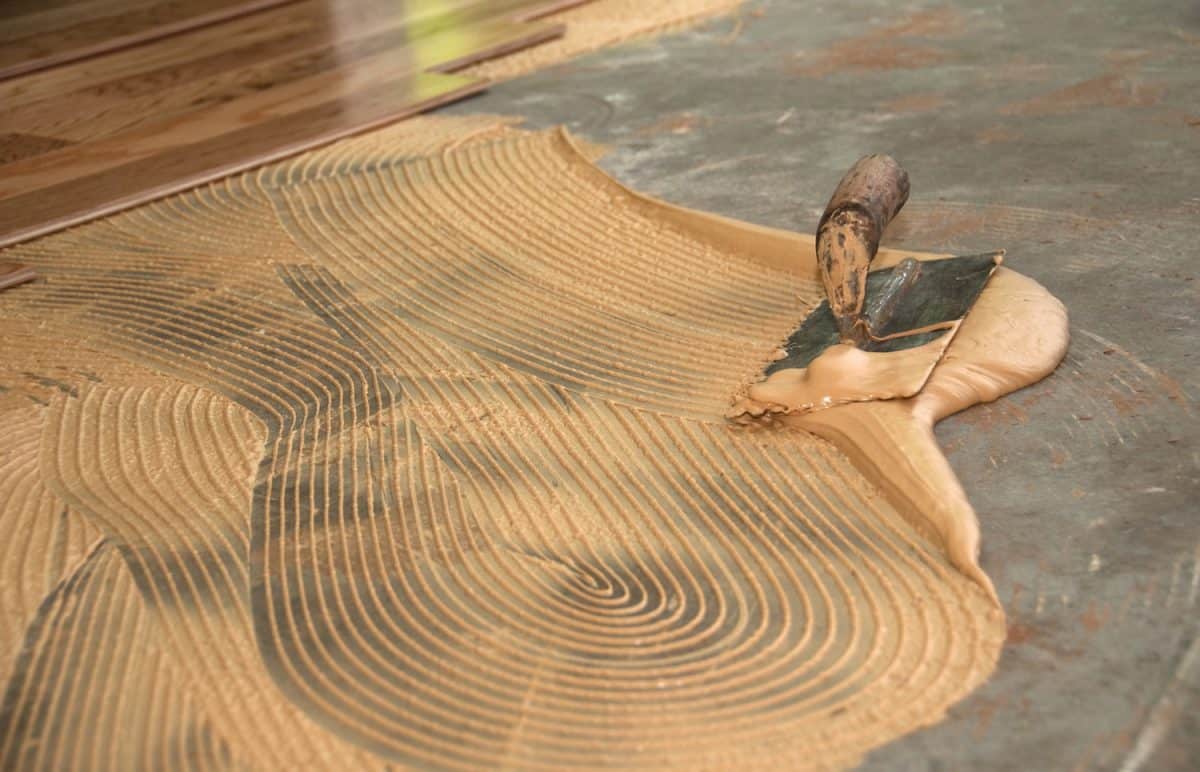
After removing the floorboards, we still have to address the elephant in the room. The elephant is the adhesive that's left behind. How can we go about removing something so aggressively in our way?
As some suggest, you can pour laundry detergent onto the adhesive. This process will dissolve or soften it if it is tar or grease-based. Afterward, all you need to do is scrape and wipe away the leftover mess.
However, if this tip doesn't work for you, the adhesive present in your home might be water-based. In that case, you can wet a towel with plain water first. Then, throw it in the microwave until the towel is hot.
Finally, lay it on the floor for 20 minutes. If the adhesive is water-based, it should become loose enough for you to scrape it easily.
Is It Difficult To Remove Hardwood Floors?
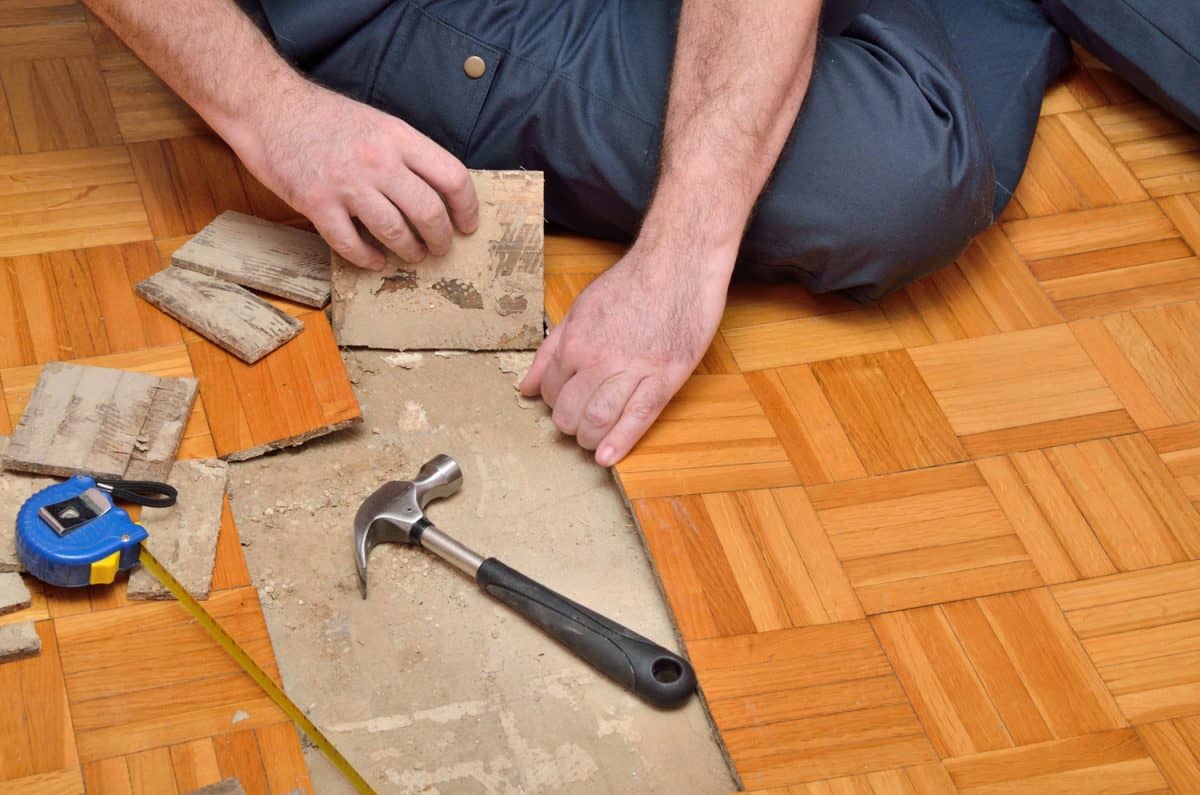
Removing hardwood floors ranges in difficulty. If you want to take the DIY -route, it will take long, arduous hours to complete the job. The strength of the adhesive is often not a joke.
You'll have to put in a lot of elbow grease. Sometimes more work is necessary in cases where hardwood flooring is glued onto concrete.
From here, you have two options.
You can rent a tool that will allow you to remove the hardwood floors as quickly as possible. It's still a strenuous task. But, the machine will be in charge of doing most of the heavy work.
Otherwise, you can hire a professional to do the job for you. In this case, it won't be too difficult of a task. At most, it will be difficult for your budget.
How Long Does It Take To Remove Hardwood Floors?
Again, it depends on what route you want to take. If you're seeking help from a contractor, removal can take anywhere from 1-3 days.
However, doing the job yourself can take anywhere from a week to 10 days. Of course, it all depends on the size of the project.
Additionally, how much work you can handle and how quickly you can work are other factors influencing how long it takes to remove the floors.
Remember, adhesives can be deceptively strong! So, if you're planning on removing hardwood floors, you have to ensure you have the time for it.
Final Takeaway
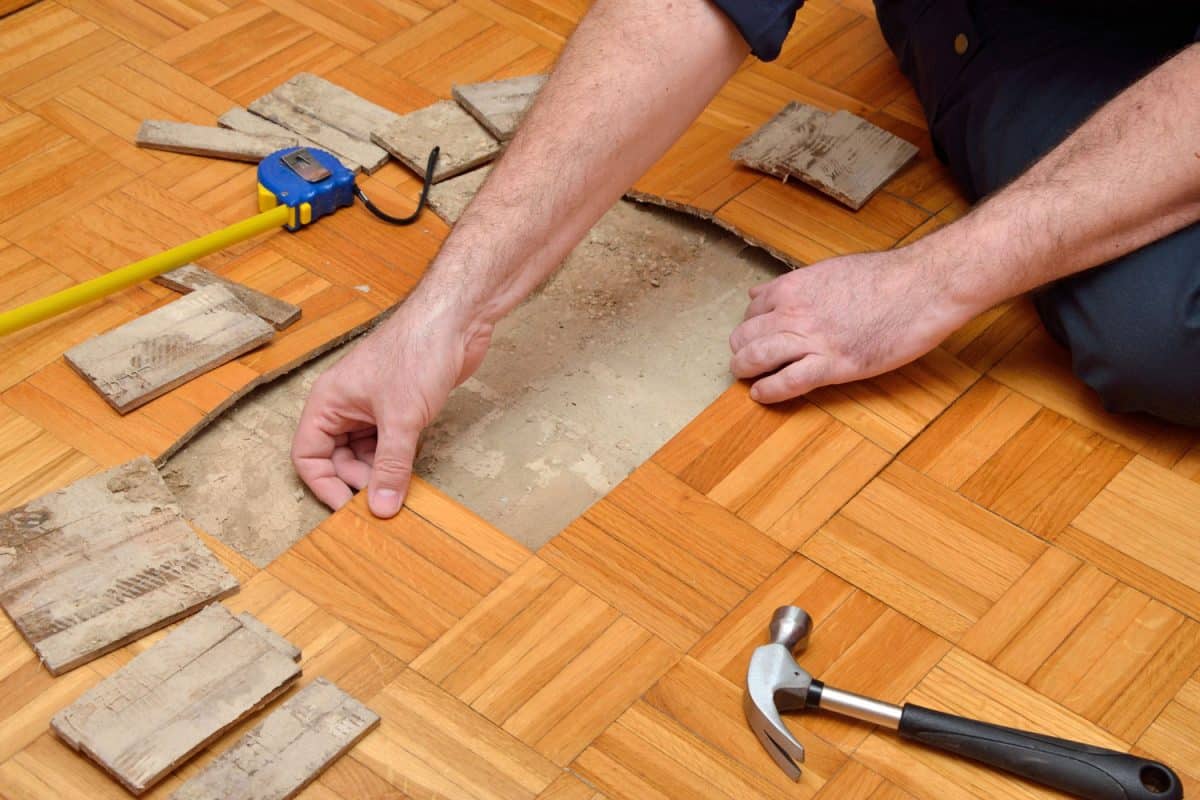
Home renovations are one of the most arduous tasks anyone can sign up for. When it comes to replacing glued-down wood flooring, it can especially seem to be the case.
However, with a bit of research, we can make our jobs a little easier. We hope you found the information above helpful!
Before you go, do you have other hardwood flooring concerns? Are you wondering if you can float a hardwood floor over concrete? We go over the answer in our post here.
Are you wondering if your hardwood flooring should match throughout the house? We also cover this topic in detail! If you want to find out more, check out our post here. Until next time!
